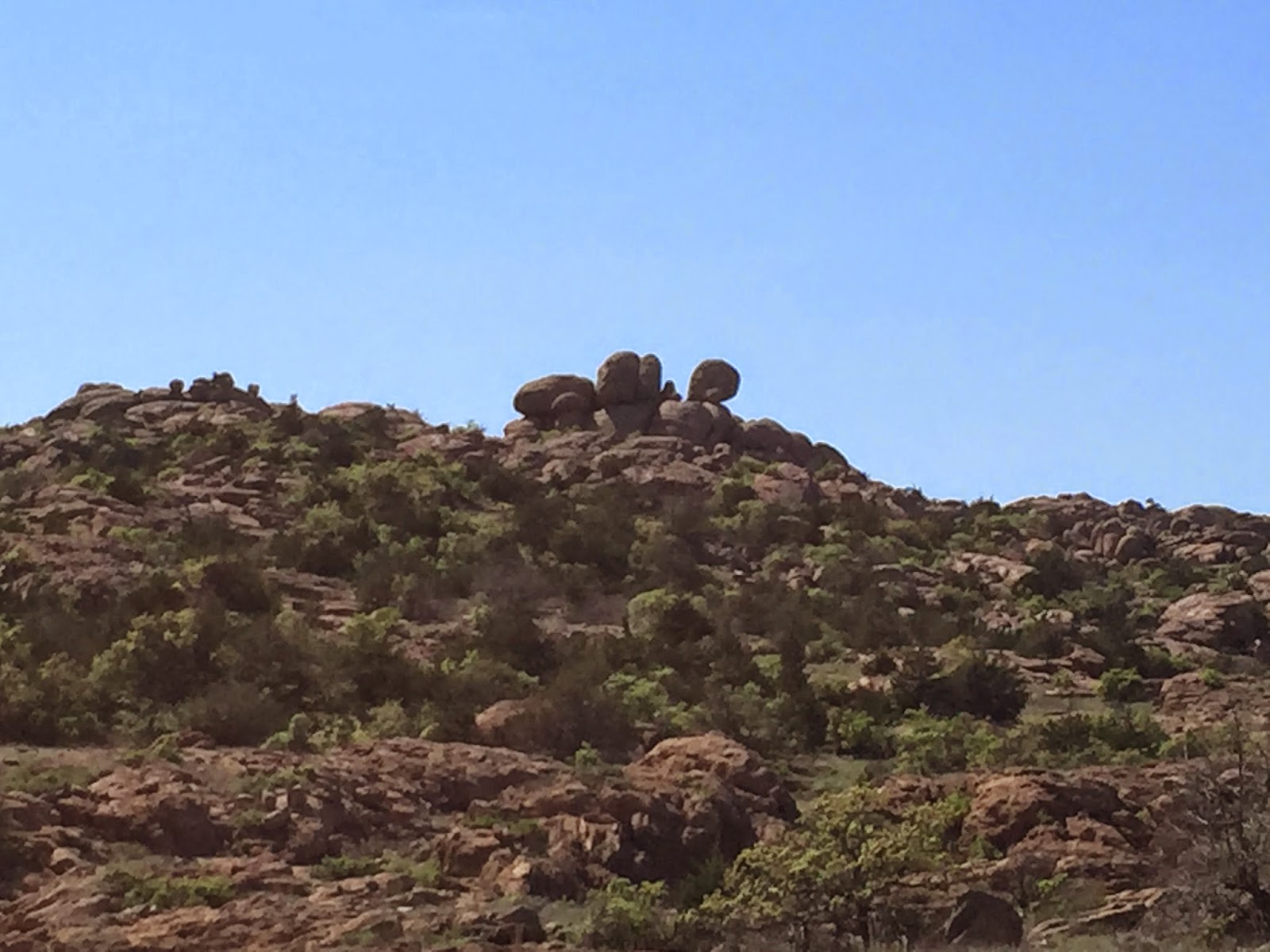Blog for April 12, 2015
Aside from the very obvious lack of cell phone coverage, and therefore our wi-fi “hot spot” will not provide us with internet access, the Wichita Mountains Wildlife Refuge has been a great experience. We loved seeing all the bison and long-horned cattle just roaming about and visible practically every place you look, even though we haven’t seen any elk, and the prairie dogs are just plain cute. The campground has been superb with a huge site, not very many other campers, (except on Friday and Saturday night), and we are right on the lake within sight of Little Baldy.
Here are a few other facts about the Refuge. Wichita Mountains are the nation’s first and oldest wildlife preserve. Deeply moved by a letter from great Comanche Chief Quannah Parker bemoaning the decimation of bison, President Theodore Roosevelt named the Wichita Mountains the country’s first national wildlife preserve in 1907. Bison brought to Wichita Mountains from New York Bronx Zoo on October 18, 1907 (7 bulls and 8 cows) were the beginning and long-horns were brought in 1927 (20 cows, 3 bulls, 3 steers, and 4 calves). They were brought from the dry prickly pear area of South Texas.
In the 1920s the endangered Texas longhorn cattle joined the bison on the 60,000-acre refuge. Numbers for both are now so hight that there’s an annual roundup and auction to keep the refuge from being overgrazed. The buyers are usually ranchers or sometimes Indian tribes who want to return bison to their own lands.There are now approximately 550 - 600 bison and 280 long-horn cattle on the refuge.
Mountain Elk were brought here around 1911 -1912 from Jackson Hole, Wyoming. There are presently 650 - 700 Rocky Mountain Elk here at the Wichita’s and stay mostly in the protected “Special Use Area” which makes up most of the refuge and can only be entered with permission.
Native Peoples inhabited this mountain range as long as 20,000 years ago. The geologic history of the Wichita's has been traced back almost 600 million years. Most geologists conclude that the mountains that we see today are much the same as they appeared 250 million years ago. The Wichita Mountains took their name from the Wichita Indian tribe.
The Wichita Mountains are rugged islands of ancient rock surrounded by a sea of grass. America’s largest grassland lies between two great mountain ranges, the easter Appalachians and the western Rockies. Like a slightly tilted tabletop, the plains are higher and drier in the west, where short grasses predominate. They are lower and moist in the East, where tall grasses flourish. Grasses gained an advantage over trees after the last ice age when times were drier. Now, grasses hold that dominance as long as periodic fires occur.
Refuge rainfall averages 32 inches per year, most coming in the spring and fall, January is the driest month, May the wettest. Deserts usually receive ten inches or less rainfall a year. Plants survive there by conserving moisture with adaptations such as spines instead of leaves, and deep tap roots that seek water far below the surface. America’s central grasslands receive 10 to 39 inches of rain yearly, much of which evaporates under the hot sun and dry winds. The amount of rain in a region dictates the type of plant community there. Western shortgrass prairies are best adapted to dry conditions, eastern tall grass prairies require more moisture. The forests of the Eastern Seaboard typically receive 30 to 60 inches of rainfall each year. This humid climate contrasts with the drier western plains.
Learning about, and appreciating, this magical landscape has been a real pleasure and we will truly miss the “Wichitas” when we leave tomorrow.
Two last pictures from this special place.
Weird boulder formations on the mountains.
A solitary bison near one of the many lakes in the refuge.


No comments:
Post a Comment